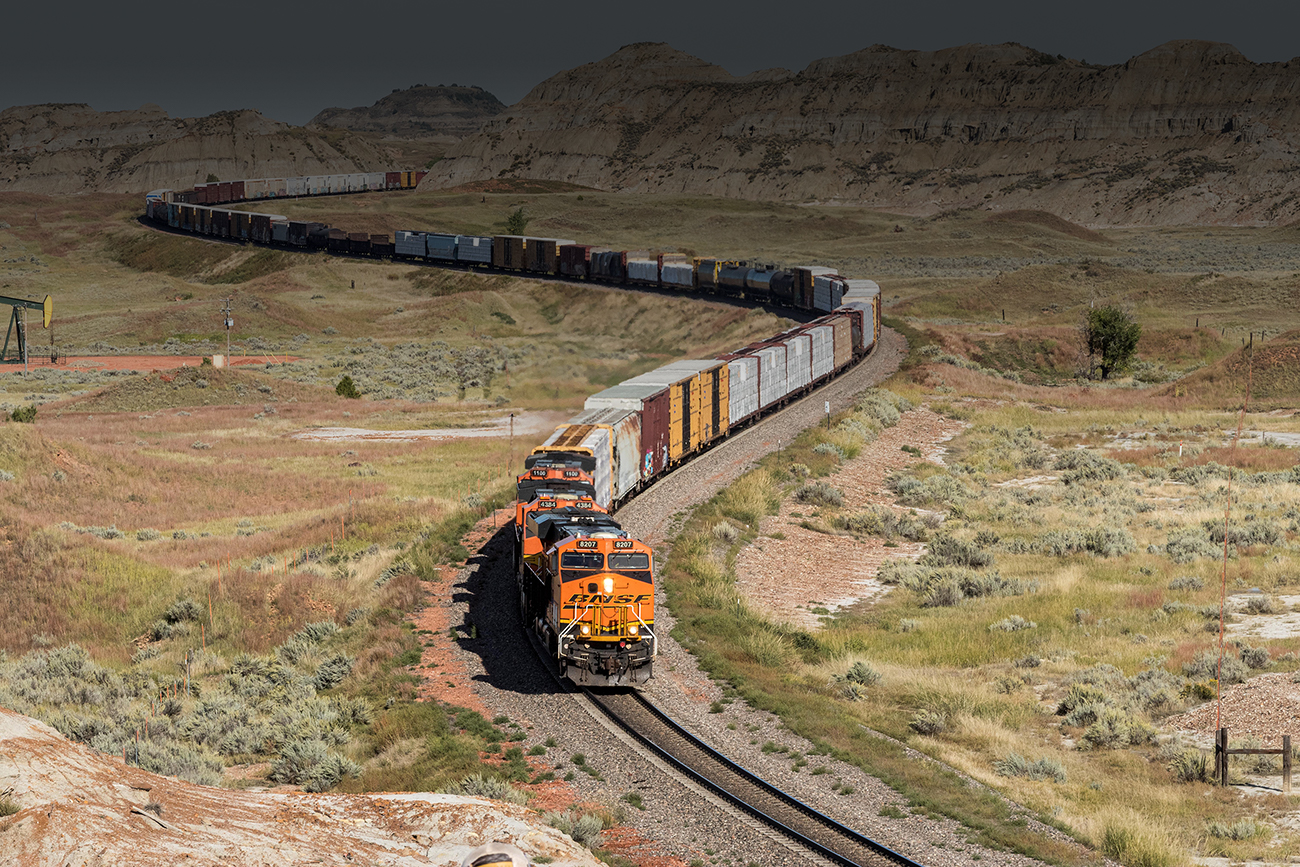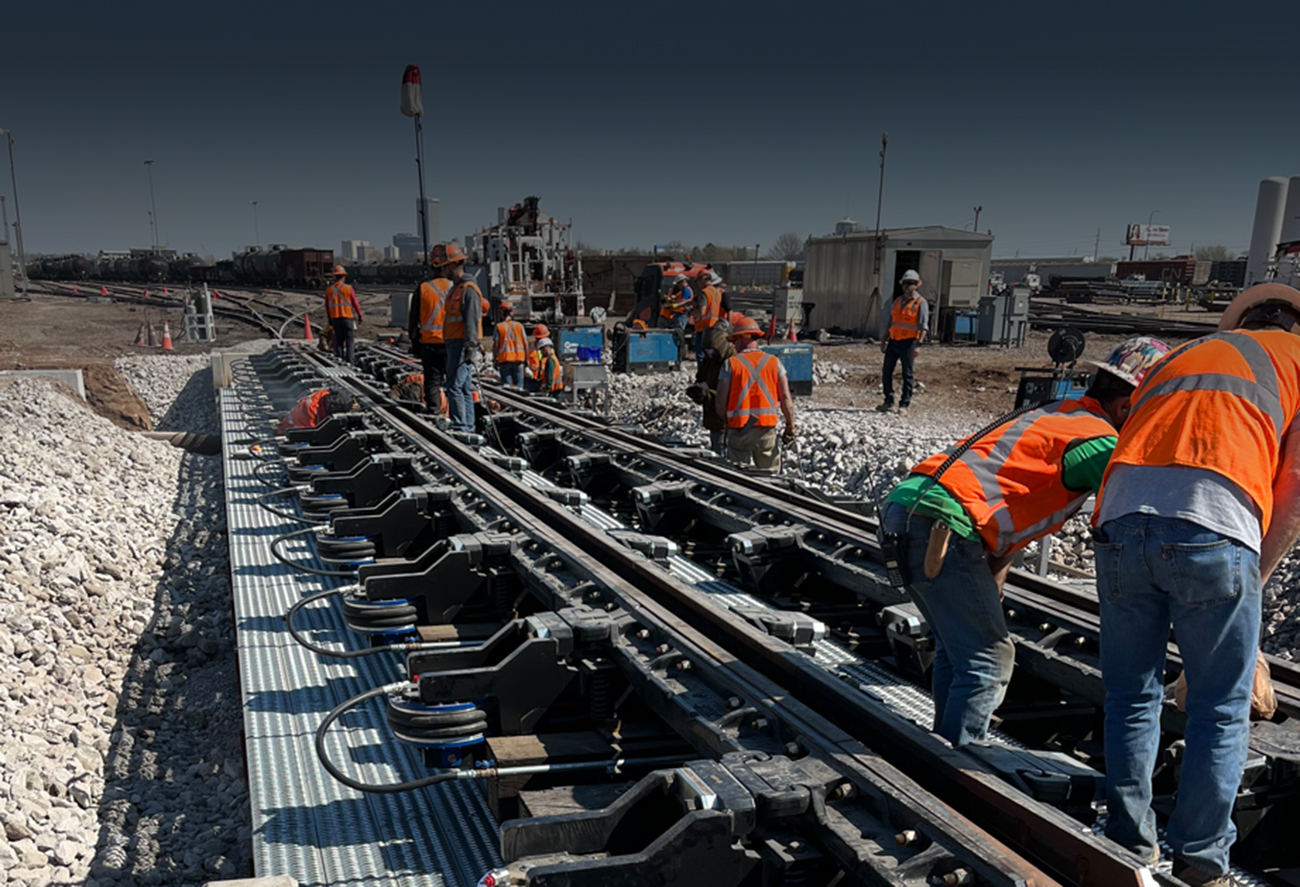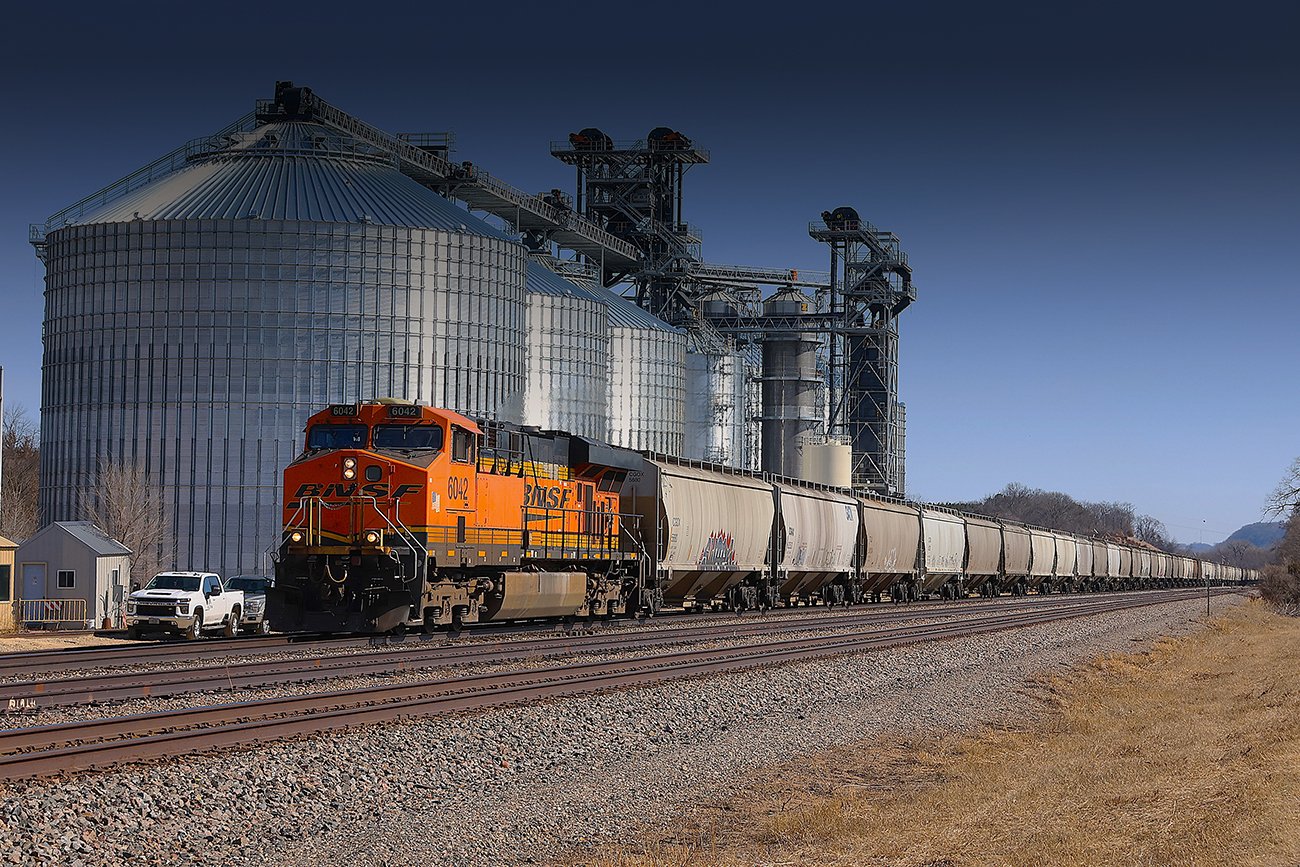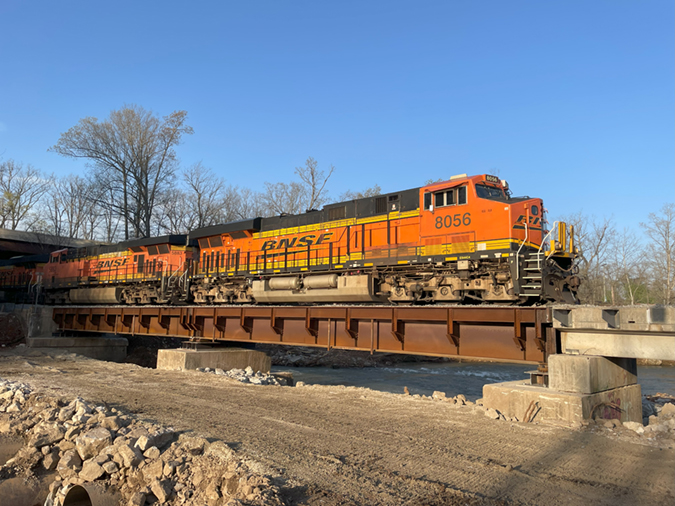
High water meets high preparedness: BNSF responds to flood damage with impressive speed
By STEPHEN MANNING
Staff Writer
Mother Nature gets a vote, but so do we.
BNSF crews responded aggressively to restore rail service in locations hit by major flooding in the South and Midwest this month.
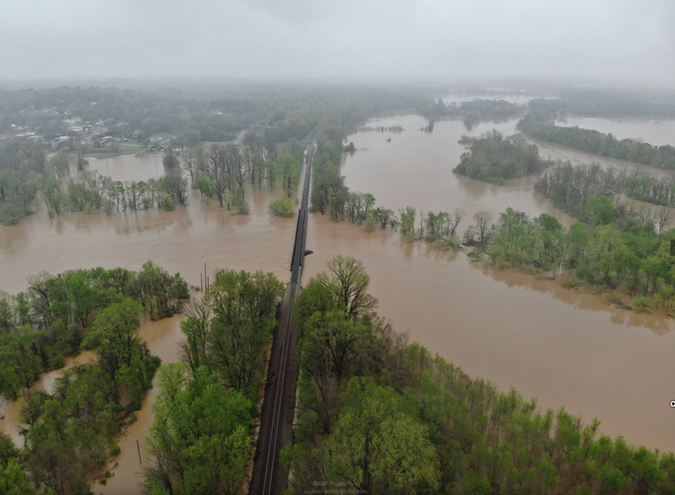
A powerful storm system struck several states on a broad front starting on April 2, with tornadoes, thunderstorms, high winds, and prolonged heavy rainfall leading to floods. On BNSF’s rail network, Arkansas, Mississippi, Missouri and Tennessee were hit, with significant disruptions to our operations. Fortunately, there were no injuries on the network.

Operations were halted in three subdivisions in our Heartland Division: River Subdivision, between Ste. Genevieve and River Junction, Missouri; Thayer North, between West Plains and Thayer, Missouri; and Thayer South, which runs from Thayer, Missouri through northeast Arkansas to Memphis, Tennessee.
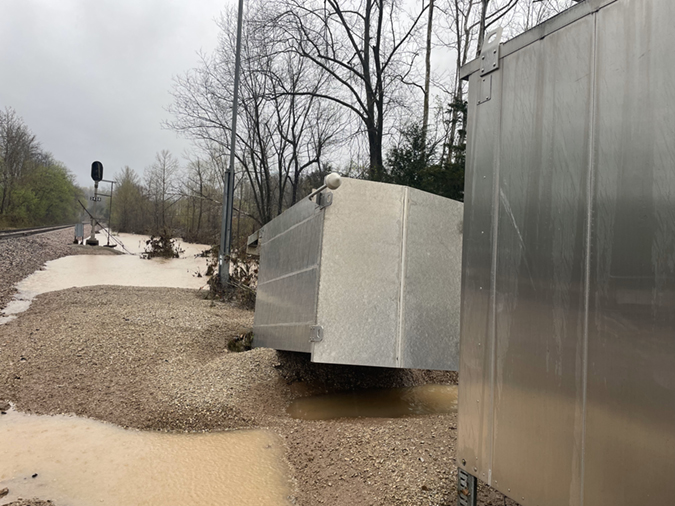
To prepare for the anticipated flooding, BNSF’s engineering team pre-positioned recovery materials and equipment, and our transportation team made plans to reroute traffic as needed. When the storms subsided, we were ready to roll.
“Experience has shown us not to take imminent weather events lightly on the Heartland Division,” said Nick Norman, general director of line maintenance. “We were able to mobilize ballast and riprap material, contract equipment, and BNSF personnel ahead of the event to put ourselves in the best possible position before any flooding occurred. Once the magnitude of the damage was known it was simply a matter of rolling up our sleeves and going to work. Next time I might think to bring a couple bridges along for good measure.”
Here's a look at some of the damage caused by the storms and how BNSF crews brought service back online.
Quick setup of mobile command center
When the extent of the storm’s impact became clear, BNSF’s Environmental and Telecom teams sprang into action to set up a mobile command center at Thayer. The command center facilitated tight coordination of the many work teams from close to the scene.
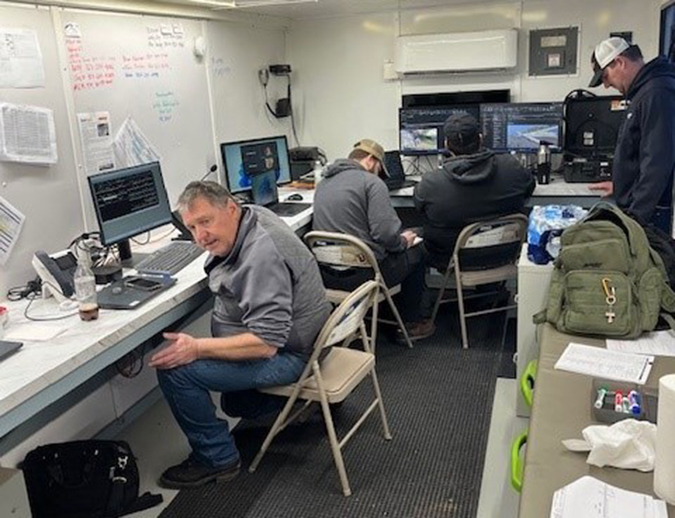
Derailment near Bay, Arkansas
The evening of April 2, a tornado struck a stationary train on a siding on our Thayer South subdivision. The tornado overturned a few railcars and damaged the mainline track. Crews responded quickly and had the track back in service by the evening of April 3.
Bridge washout and derailment at Mammoth Spring, Arkansas
What would you say is a reasonable amount of time to replace an entire bridge? A month? Six months?
How about five days?
In the early morning of April 5, the flooding Warm Fork Spring River washed out a BNSF rail bridge and derailed several railcars from a stationary train. The train had stopped in response to weather warnings.
Crews replaced the bridge and returned the line to service only five days later, by the morning of April 10 – 18 hours ahead of schedule.
“Like any major railroad service interruption, rapidly replacing a bridge is a team sport,” said Ron Berry, general director of structures. “We have an experienced group of in-house bridge experts who worked around the clock to concurrently advance damage assessments, engineering design, material procurement, site access and construction. The crews on the ground adapted through every barrier with safe execution and ingenuity.”
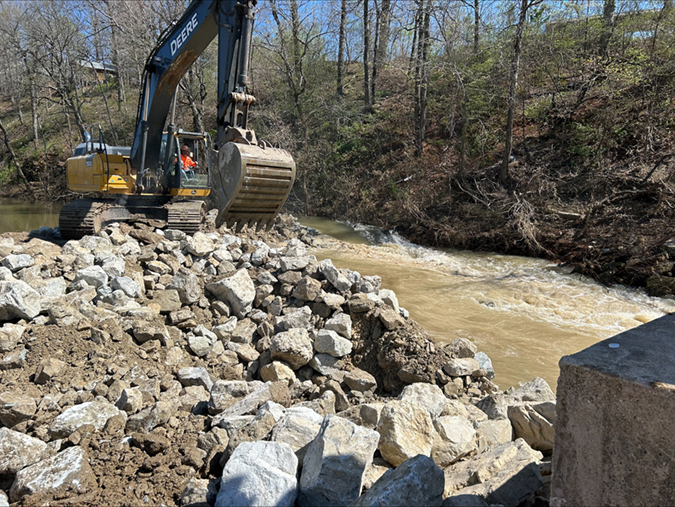

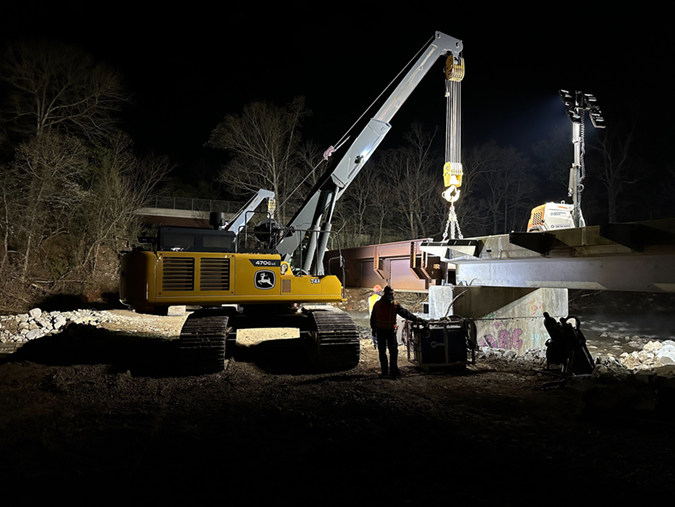
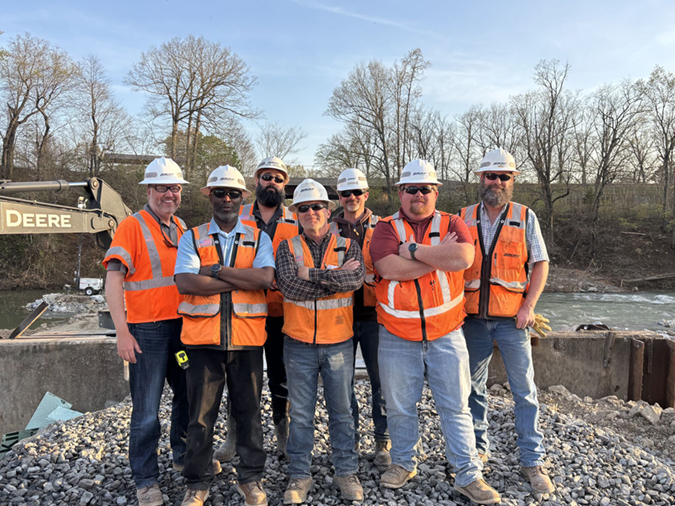
Two dozen washouts in Thayer North, Thayer South subdivisions
In addition to the lost bridge, track was washed out in approximately two dozen places in Thayer North and Thayer South subdivisions. Crews repaired these while the bridge was being replaced.
The washouts ranged from 15 feet up to 1,000 feet in length, with several of them longer than 300 feet.
Culvert washout near Wittenberg, Missouri
On the River Subdivision, south of Wittenberg, Missouri, floodwater washed away a culvert. Our Engineering Team decided to replace the culvert with a bridge. The bridge was operational, and the track was back in service by April 10.
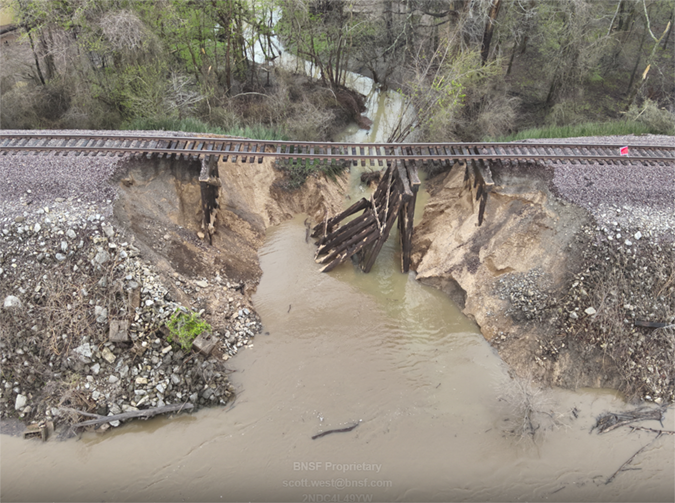


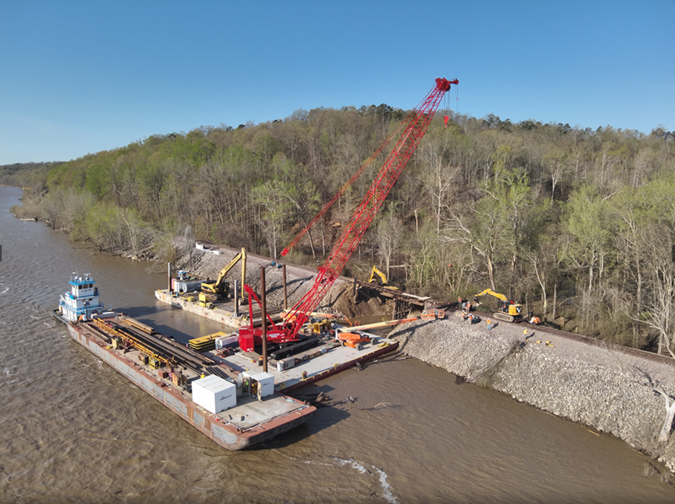
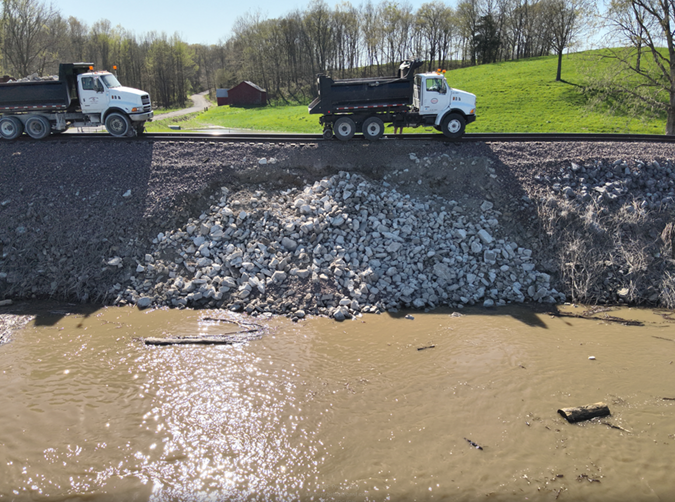
All three subdivisions were back in service and trains were moving freight across them for our customers by April 11.
Our rail network took a hit this month, but thanks to planning, preparation, coordination and the tireless work of team members, BNSF bounced back quickly, with no injuries to its people in the process.
“Service interruptions involving flooding can be challenging, but our teams were well-prepared, and our response was impressive,” said John Cech, vice president of Engineering. “Thank you to everyone who stepped up and played a role in this amazing effort to quickly and safely restore service for our customers.”
